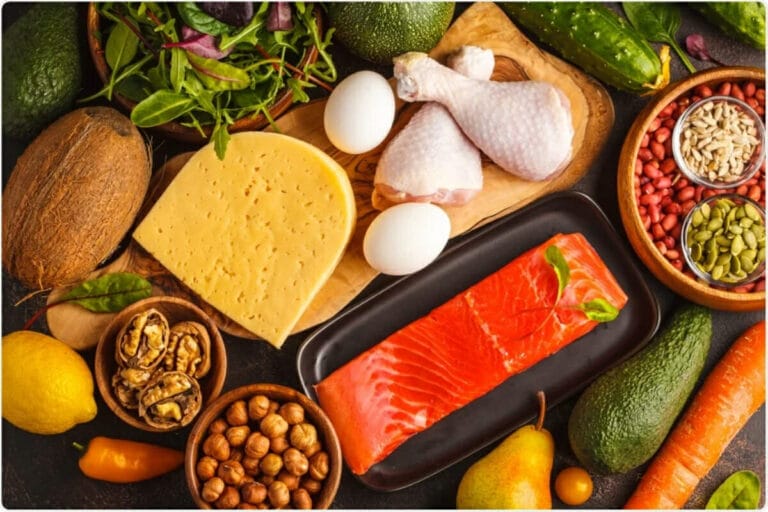High Blood Pressure Diet: Foods To Eat And Avoid

High blood pressure, also known as hypertension, is a common health problem affecting millions of people worldwide. It occurs when the force of blood against the artery walls is consistently too great, putting additional strain on the heart and blood vessels.
High blood pressure, if uncontrolled, can lead to serious health problems such as heart disease, stroke, and kidney damage. A carefully curated diet that includes foods that promote heart health while avoiding those that contribute to hypertension is one effective way to manage high blood pressure. This article will look at which foods to eat and which to avoid to maintain healthy blood pressure levels.
Understanding High Blood Pressure
High blood pressure can often be called the “silent killer” because it typically has no symptoms, but it significantly increases the risk of heart disease and stroke. Understanding the factors contributing to hypertension and how dietary choices play a crucial role in its management is essential.
READ ALSO: 7 Effective Yoga Poses To Relieve Menstrual Pain
The DASH Diet: A Heart-Healthy Approach
The Dietary Approaches to Stop Hypertension (DASH) diet is a well-researched diet designed to lower blood pressure. It emphasizes fruits, vegetables, whole grains, and lean proteins while reducing sodium intake.
Essential Nutrients for Blood Pressure Management
Potassium-Rich Foods
Potassium helps the body in excreting sodium, thus supporting healthy blood pressure levels. Potassium-rich foods include bananas, oranges, spinach, and sweet potatoes.
Magnesium-Rich Foods
Magnesium aids in relaxing the blood vessels, promoting better blood flow. Incorporate magnesium by consuming nuts, seeds, whole grains, and leafy greens.
Calcium-Rich Foods
Calcium plays a role in maintaining blood vessel health. Dairy products, tofu, and almonds are good sources of calcium.
Vitamin D Sources
Vitamin D deficiency may be linked to high blood pressure. Sunlight, fatty fish, and fortified dairy products can boost vitamin D levels.
The Role of Sodium in Hypertension
Excessive sodium intake can lead to fluid retention and increased blood pressure. Reducing sodium consumption is essential for hypertension management.
Foods to Eat for Lowering Blood Pressure
Leafy Green Vegetables
Leafy greens, such as spinach and kale, are rich in potassium, magnesium, and nitrates, which help relax blood vessels.
Berries
Berries are packed with antioxidants and flavonoids, lowering blood pressure and reducing inflammation.
Beets
Beets are high in nitrates, enhancing blood flow and lowering blood pressure.
Fatty Fish
Fatty fish like salmon and mackerel are excellent sources of omega-3 fatty acids, which benefit heart health.
Whole Grains
Whole grains, like quinoa and oats, are rich in fiber and can help lower blood pressure.
Nuts and Seeds
Almonds, chia seeds, and flaxseeds are excellent sources of magnesium and heart-healthy fats.
Olive Oil
Olive oil is a healthy alternative to saturated fats and can help improve cholesterol levels.
Greek Yogurt
Greek yoghurt is a calcium-rich option that can be part of a heart-healthy diet.
Foods to Avoid for Hypertension Management
Processed and Canned Foods
Processed and canned foods often contain high levels of sodium and unhealthy additives.
Excessive Salt and Sodium
Limiting salt intake, including from table salt and packaged foods, is crucial for blood pressure control.
Sugary Beverages
Sugary drinks contribute to weight gain and increased blood pressure.
Red Meat
High consumption of red meat is associated with an increased risk of hypertension.
Trans Fats
Trans fats, commonly found in processed and fried foods, can raise bad cholesterol and blood pressure levels.
Alcohol
Excessive alcohol consumption can raise blood pressure and damage the heart over time.
The Impact of Caffeine on Blood Pressure
Caffeine can cause a temporary spike in blood pressure, especially in individuals not accustomed to its effects.
The Importance of Hydration
Proper hydration is essential for maintaining healthy blood pressure levels.
Developing Healthy Eating Habits
Meal Planning
Creating a balanced meal plan helps maintain a heart-healthy diet consistently.
Portion Control
Controlling portion sizes aids in weight management and blood pressure control.
Mindful Eating
Paying attention to hunger cues and eating mindfully can prevent overeating and make healthier food choices.
The Benefits of Regular Exercise
Engaging in regular physical activity supports heart health and blood pressure management.
Managing Stress and Blood Pressure
Chronic stress can contribute to high blood pressure, so stress-reduction techniques are beneficial.
Monitoring Blood Pressure at Home
Regularly monitoring blood pressure at home can help individuals track their progress and identify any changes.
In Conclusion
A well-balanced and heart-healthy diet can be crucial in managing high blood pressure. Individuals can take significant steps towards better cardiovascular health by incorporating nutrient-rich foods and avoiding those that contribute to hypertension.
Remember, small changes in diet and lifestyle can lead to substantial improvements in blood pressure and overall well-being.
- How does excess salt intake affect blood pressure? Excess salt intake leads to water retention, increasing blood volume and putting pressure on blood vessels.
- Can caffeine cause a spike in blood pressure? Yes, caffeine can cause a temporary increase in blood pressure, especially in sensitive individuals.
- Is it necessary to cut out all fats from the diet? No, focusing on healthy fats from sources like nuts, seeds, and fish is important while avoiding trans fats.
- Are there any specific foods to help lower blood pressure quickly? While there are no instant fixes, foods like berries, beets, and leafy greens can have a positive impact over time.
- Can I consume alcohol in moderation with high blood pressure? Moderate alcohol consumption is generally acceptable, but it’s essential to consult a healthcare provider.









